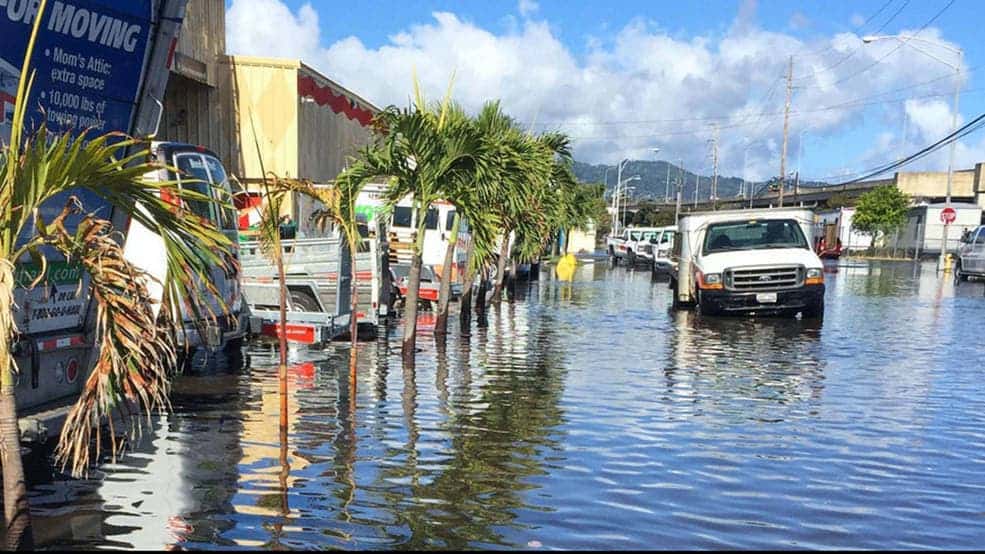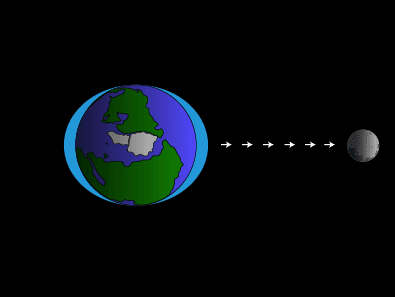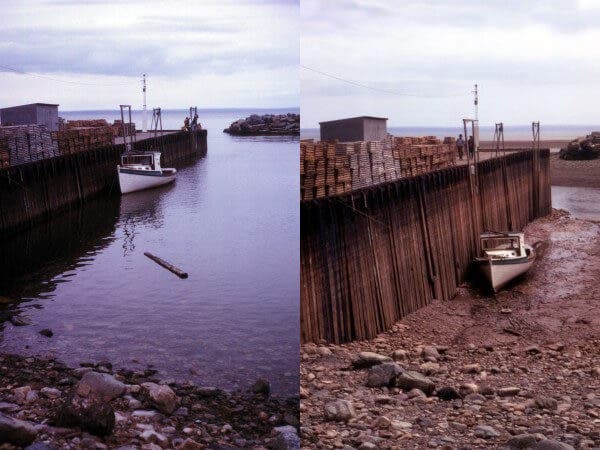
The U.S. coastline can expect to see three to four times as many high-tide flood days each year during the 2030s. Normally, in such a situation, climate change is to blame (and truthfully, it will definitely contribute to some extent to floods in North America in the future), but this time we also have to look to the moon. According to a new study, in the mid-2030s, the moon will enter a tide-amplifying cycle that, when combined with global sea-level rise due to climate change, could cause troublesome higher-than-usual high tides.
The moon is held in place by Earth’s gravity. But just because it’s smaller — the moon only has about 1/100th the mass of Earth — that doesn’t mean that the moon doesn’t exert its own influence on Earth. The moon’s gravitational pull on the planet generates what’s called the tidal force, causing water in the oceans to bulge out on the side closest to the moon and the side farthest from the moon. These bulges are what we know as high tides.
Since the planet rotates, every region of Earth will pass through both of these bulges each day. When you’re in one of these bulges where the water wants to travel towards the moon, you experience a high tide. But when you’re outside the reach of these bulges, you experience a low tide.
It takes half a lunar day, on average 12 hours and 25 minutes, from one high tide to the next, so we have high and low tides nearly twice a day. The change from low to high tide is known as flood tide, while the change from high to low tide is called ebb tide.

Since continents prevent the water in the ocean from perfectly following the moon’s pull, there will be some variation between high and low tide from place to place. It can range from almost no difference to over 16 meters (50 feet). As a result, water in the world’s oceans sloshes around like it would in an oddly shaped bathtub rather than in a smooth and even basin.

Besides topography, tidal range can also be affected by the moon’s phase (when the sun and the moon are aligned, their gravitational pull combines to exert more influence on the ocean) and the wobble of the moon’s orbit.
Earth’s natural satellite has an elliptical orbit, leading to variation in the velocity at which it circles the planet and causing the “light side” to appear at slightly different angles throughout any given month. In other words, the moon “wobbles” similarly to a rocking ship at sea.
It does so in a rhythmic 18.6-year cycle. During the first half of the cycle, tidal forces are slightly suppressed, leading to lower high tides and higher low tides. During the other half of the cycle, the pattern is reversed, with higher high tides and lower low tides.
At the moment, we’re in the tide-amplifying part of the cycle. This phase will repeat itself in the mid-2030s. There’s nothing new about this wobble, first reported in 1728. But by this timeframe, scientists expect global sea levels to reach levels where higher tides can cause problems, according to a new study published in Nature Climate Change by researchers at NASA.
The researchers claim that during the next higher-than-usual high tide phase of the lunar cycle, American coastal cities could flood up to four times as often as they do now. These floods will sometimes occur in clusters lasting a month or longer, depending on the positions of the moon, Earth, and the sun.
“It’s the accumulated effect over time that will have an impact,” said Phil Thompson, an assistant professor at the University of Hawaii and the lead author of the new study. “But if it floods 10 or 15 times a month, a business can’t keep operating with its parking lot under water. People lose their jobs because they can’t get to work. Seeping cesspools become a public health issue.”
According to the researchers, the higher sea levels amplified by the lunar cycle will cause frequent flooding in almost all U.S. coastlines, apart from far northern coastlines like Alaska.
The good news is that urban planners have ample time to prepare for the upcoming high tide floods.
“From a planning perspective, it’s important to know when we’ll see an increase,” said study co-author Ben Hamlington of NASA’s Jet Propulsion Laboratory in Southern California. “Understanding that all your events are clustered in a particular month, or you might have more severe flooding in the second half of a year than the first – that’s useful information.” A high-tide flood tool developed by Thompson already exists on the NASA team’s sea level portal, a resource for decision-makers and the general public. The flood tool will be updated in the near future with the findings from this study.


